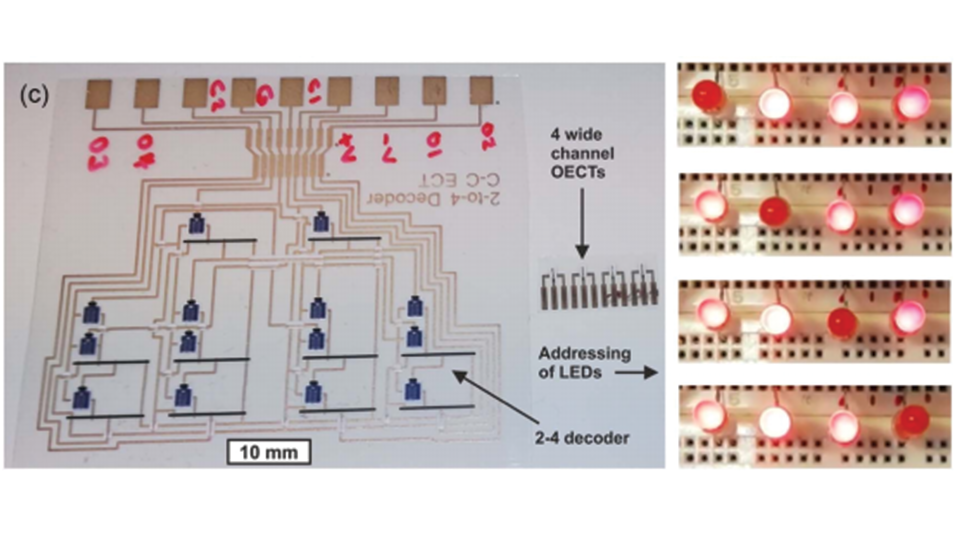
RISE publish on OECT work linked with WEARPLEX
Monolithic integration of display driver circuits and displays manufactured by screen printing
Peter Andersson Ersman1 , Marzieh Zabihipour2 , Deyu Tu2 , Roman Lassnig1 , Jan Strandberg1 , Jessica Åhlin1 , Marie Nilsson1 , David Westerberg1 , Göran Gustafsson1 , Magnus Berggren2 , Robert Forchheimer3 and Simone Fabiano2
1 RISE Acreo, Department of Printed Electronics, Bredgatan 33, SE-602 21 Norrköping, Sweden
2 Laboratory of Organic Electronics, Department of Science and Technology, Linköping University, SE-601 74 Norrköping, Sweden
3 Information Coding Group, Department of Electrical Engineering, Linköping University, SE-581 83 Linköping, Sweden
Link to the paper: https://iopscience.iop.org/article/10.1088/2058-8585/ab7ab4
Project partner RISE have published their latest OECT research, used in WEARPLEX, in the Flexible and Printed Electronics Journal. Lead author is Peter Andersson Ersman, Work Package 3 leader developing the printed electronic circuits essential for the WEARPLEX system to work.
Abstract
Here, we report all-screen printed display driver circuits, based on organic electrochemical transistors (OECTs), and their monolithic integration with organic electrochromic displays(OECDs). Both OECTs and OECDs operate at low voltages and have similar device architectures, and, notably, they rely on the very same electroactive material as well as on the same electrochemical switching mechanism. This then allows us to manufacture OECT-OECD circuits in a concurrent manufacturing process entirely based on screen printing methods. By taking advantage of the high current throughput capability of OECTs, we further demonstrate their ability to control the light emission in traditional light-emitting diodes(LEDs), where the actual LED addressing is achieved by an OECT-based decoder circuit. The possibility to monolithically integrate all-screen printed OECTs and OECDs on flexible plastic foils paves the way for distributed smart sensor labels and similar Internet of Things applications.
To cite this article: Peter Andersson Ersman et al 2020 Flex. Print. Electron. 5 024001

